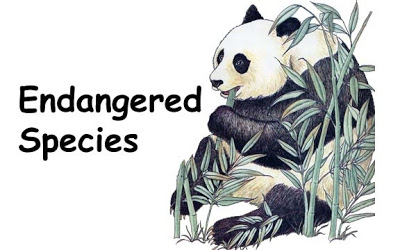We use affiliate links to run our site. When you buy through links on our site, we may earn an affiliate commission, without any added cost to you. Learn more
The conservation status of the different group of animals which I had mentioned in past on my blogs has a very important role in studies of animals. This gives an idea whether an animal (or a group of animal) which we are discussing is still alive or it used to live once upon a time, and if the animal is still here what are the chances that they will become extinct (no more living animal) in near future.
These lists have been made by taking into account so many factors like overall increase or decrease in the population, breeding rate, loss of habitat, external and internal threats and not only by counting the total number of population of a particular animal.
The IUCN red list is the best-known conservation status listing which is accepted by the governing bodies of most countries. This list contains a vast number of animals and even included species which became extinct since 500 AD. There are 9 different categories in IUCN red list:
Extinct (EX): The animals in this category are not present in live form anywhere. There is no doubt that the last individual of this category of animals has died. These data need to be collected after exhaustive surveys.
Extinct in the Wild (EW): These type of animals are generally not present in their natural habitat i.e, in the wild. They can be found only in cultivation or in captivity.
Critically Endangered (CR): Though they have not become extinct in the wild there is an extremely high risk of being so.
Endangered (EN): These animals are in very high risk of extinction in the wild. Risk-wise they are less riskier than the CR category.
Vulnerable (VU): They are in very high risk of going into the endangered list as per the best available evidence.
Near Threatened (NT): This category of animals are currently not threatened as of now, but there is a heavy chance that they will be in the threatened category by very near future due to many reasons.
Least Concern (LC): The animals in this segment are generally widespread and abundant on earth. So the name also suggests we don’t need to be worried about their conversation as of yet.
Data Deficient (DD): In case there are deficiencies in the available data and thus the information becomes inadequate. It may happen that these animals are well studied and biology of these animals are known but appropriate data regarding their habitat is always lacking.
Not Evaluated (NE): It is under this category when they are not evaluated against the criteria.
The main purpose of this list is to provide a framework for classification of different animals on their risk of extinction from the planet. Though the list may prompt us to focus on the animals on the highest ranks it is not the sole means of setting priorities.
This red list is analyzed and the result is published in every 4 years. You can find the latest list by visiting the official site. I have mentioned an animal in general layman’s terms. The original term which is used by IUCN is taxon. It is much more technically correct to use taxon in case of animals for biological usages.
Amazon and the Amazon logo are trademarks of Amazon.com, Inc, or its affiliates.

I like the efforts you have put in this, regards for all the great blog posts.
awesome info!
I like what you guys are up too. Such intelligent work and reporting! Keep up the superb works guys I have incorporated you guys to my blogroll. I think it will improve the value of my web site 🙂